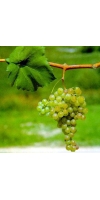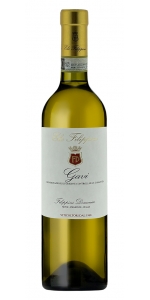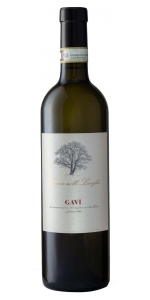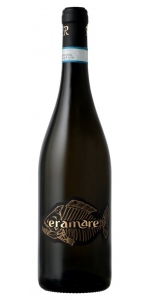Cortese

Cortese is an Italian wine grape variety used to create white wines. Earliest records of Cortese date to 1659 in Montaldeo and note that all vineyards were planted with the Cortese or Vermentino variety. Cortese was widely planted in the 1800s in Piedmont due to its ability to withstand disease and to produce high yields and good quality wine. Wines containing the Cortese variety are medium bodied wines with notes of lime and greengage. Some vines grown in cooler regions tend to produce very acidic flavors, but producers have found a way to mellow the tone of the wine with oak barrel fermentation. The taste of the Cortese white wine is said to be a signature Italian taste, with pleasing aromas and light flavor. The wines are typically higher priced due to the location of Piedmont, where the wines are produced. Growers, however, have planted Cortese in California, although the amount planted is quite small. Cortese is mostly linked with the Cortese di Gavi wine that is created in the area of Alessandria. The grape has a moderate level of acidity and a light flavor, and is paired well with seafood dishes. In restaurants in Genoa, the wine is paired with fresh seafood from the Lingurian coast. Cortese is also used to blend with the Bianco di Custoza.
This 100% Cortese white offers fruity aromas intertwined with hints of daisy and acacia flowers. Fresh and elegant on the palate with charming citrus notes.
Quercia nelle Langhe Gavi is 100% Cortese.
Straw yellow with greenish reflections. The bouquet is fruity with hints of daisy and acacia flowers.
Citrus notes can be detected on the palate; Fruity charming, fresh and elegant taste.
Hand-picked during the first ten days of September.
The grapes are delicately pressed and the stalks are removed.
The must ferments in stainless steel vats at a controlled temperature of 18°–20°C for about 20 days.
After fermentation, the wine is kept in stainless steel vats until the bottling.
Rinaldi Eramare Piemonte Cortese is 90% Cortese and 10% Sauvignon Blanc.
The Cortese grapes are coming from the Estate's vineyard located at the best exposures between Ricaldone and Maranzana at about 220 meters above sea level.
A salty and tasty white wine; fresh, simple and juicy.
After the alcoholic fermentation the wine refines on yeast for 4 months just to have a better color and taste.
A lot of minerality and notes of grapefruit.
Ideal for an aperitif, or with seafood appetizers, fish first courses, grilled fish, and vegetable pies.
- back
Selected Options
Grape Types
Categories
Pricing
Countries
Regions
Grape Types
Wineries
Organic/Free Shipping
Pernot Belicard Bienvenue Batard Montrachet Grand Cru is made from 100 percent Chardonnay.
Aromas of white peach, white apple, with a beautiful minerality. Also lighty salty, chalky aromas and some bread and brioche flavors and a hint of vanilla.
Paultry with cream based sauces, French cheese, like camembert, but not to strong, also sea food and fish.
Landes Cuvee Tradition Lussac Saint Emilion is made from 80% Merlot, 15% Cabernet Sauvignon and 5% Cabernet Franc
Color: deep ruby intense color.
Aroma: racy and aromatic nose with aromas of ripe red fruit.
Taste: this wine is silky, round and smooth first taste, with aromas of raspberries, and blackcurrant, powerful and complex finish.







